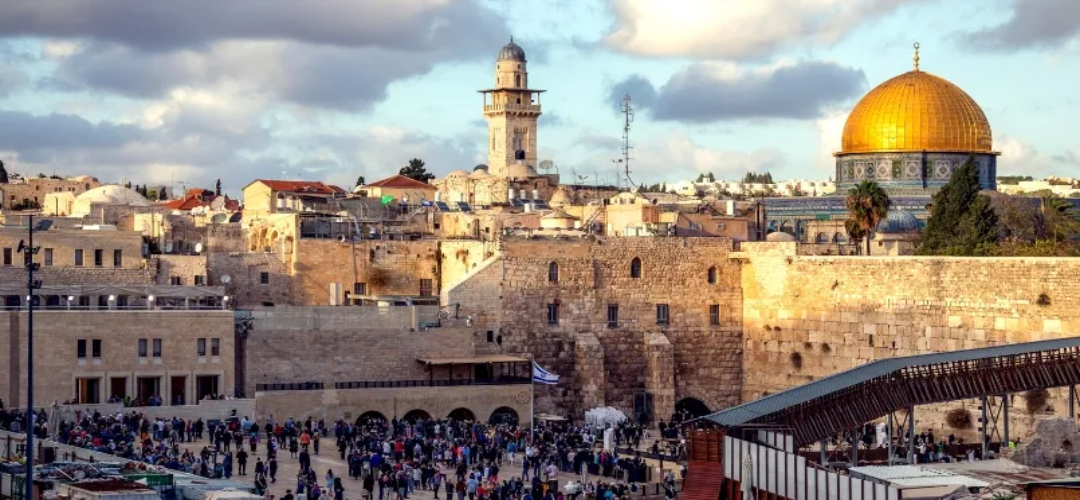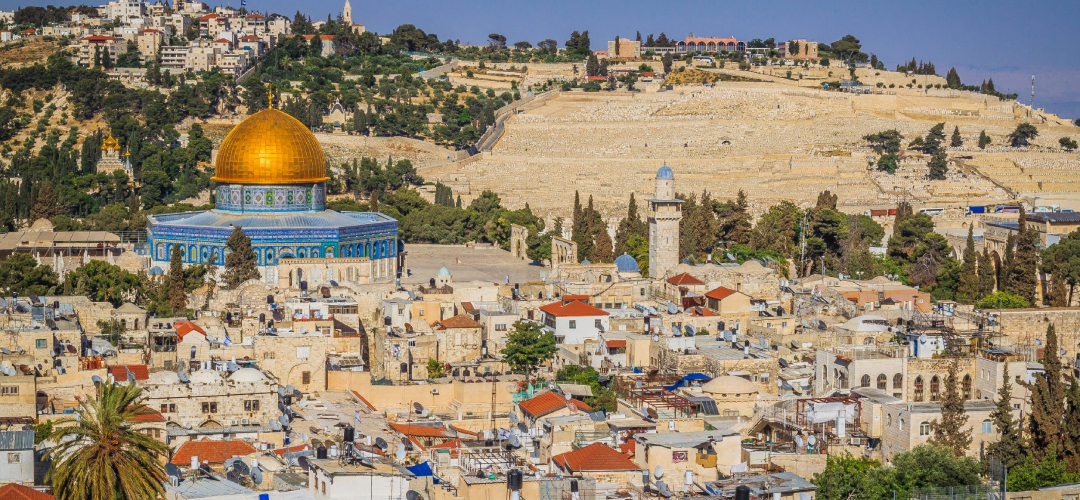The Plot Thickens
January 27, 2024 | Expert Insights

War in Gaza and a controversial land deal cast a dark shadow over Christmas for Jerusalem's Armenians. Instead of traditional celebrations, many huddled in a protest tent, guarding their land against a luxury hotel project. This deal, secretly signed in 2021, leased a vast chunk of the Armenian Quarter, including the historic Cow's Garden, for a pittance. Homes, churches, and sacred spaces were all at risk.
Background
This became a unifying force for the 2,000-strong community, often divided by internal strife. Priests and parishioners, families, and rivals all joined hands in a 2-month sit-in, defending their heritage against bulldozers, armed settlers, and shadowy threats. For a luxury hotel project, the deal leased 11,500 square meters of the Cow’s Garden- a quarter of the Quarter. Homes, church buildings, and even the car park were on the line, their fate entrusted to an annual fee of a mere $300,000. Outrage united the community. Priests and locals, once divided by internal struggles, now stood shoulder-to-shoulder in a 24/7 vigil. They manned makeshift barricades, braved bulldozers, and faced armed settlers determined to protect their homes and heritage. Despite its vibrant spirit, the Armenian Quarter faces formidable challenges that threaten its very existence. Decades of outward migration, driven by economic struggles and political strife, have seen the community dwindle from thousands to just over 2,000. This shrinking population raises a stark question: can the Armenian Quarter sustain itself?
"Everything was put in danger," declared Setrag, a ceramicist turned activist. "We will stand up and defend our rights till the end." The fight continues, casting a long shadow over the future of this ancient community. Their unity, forged in the face of an existential threat, offers a glimmer of hope, a testament to the enduring spirit of a people who refuse to be silenced.
Jerusalem's Armenian Quarter reverberates with a complex narrative woven with threads of history, faith, and the fight for survival. The Armenians' presence in Jerusalem dates back to the 4th century. Fleeing persecution in their homeland, they found refuge within the city walls, establishing a vibrant community centred around the majestic St. James Cathedral. Over time, the Quarter blossomed into a cultural and religious hub, boasting churches, monasteries, and workshops that resonated with the rhythms of Armenian life.
Beyond its physical boundaries, the Armenian Quarter holds immense cultural and religious significance. The intricate architecture of St. James Cathedral, with its golden dome and intricate mosaics, stands as a testament to Armenian artistic mastery. The Quarter's cobbled streets echo the sounds of ancient hymns and traditional instruments while the scent of incense and spices fills the air, transporting visitors to a world steeped in history and faith.

Analysis
The controversial land deal, leasing a significant portion to a developer for a luxury hotel project, has ignited a firestorm of resistance. Local Armenians, angered by the meagre terms and potential displacement, launched protests. The deal further strained relations with Jordan and the Palestinian Authority, leading to their withdrawal of recognition from the Patriarch. International lawyers were summoned, and tensions escalated with the Patriarch claiming a defrocked priest had deceived him. The construction itself threatens to encroach on historic properties and disrupt the area's delicate architectural harmony, eroding the essence of the community's cultural heritage. Furthermore, the influx of wealthy tourists associated with the hotel could lead to higher living costs and further marginalize the Armenian presence in Jerusalem.
The developer's forceful car park takeover and subsequent confrontations, including one involving armed men, cast a dark shadow. Father Diran Hagopian's Facebook Live broadcast, capturing masked attackers chanting "You should leave," amplified anxieties.
Suspicions of settler involvement fuelled concerns. Ever since Israel captured the Old City in 1967, Jewish investors have sought to expand their presence, a move viewed by Palestinians as a threat to their future capital. Researchers like Aviv Tatarksy from Ir Amim warn of "far-reaching aims" to Judaize the Old City, with potential implications for the Temple Mount/al-Aqsa Mosque.
Opponents of the deal also raise concerns about transparency and fair negotiation. They question whether the Armenian Patriarchate, which negotiated the deal, truly represented the community's best interests. This lack of trust fuels anxieties and fuels further discord within the community. The fight against the hotel project is just one battle in a larger struggle for the survival and sustainability of the Armenian Quarter. The community needs robust initiatives to attract young families, revive traditional crafts and businesses, and strengthen its economic base. Educational programs that nurture the Armenian language and culture are crucial to securing the future of their unique identity.
International advocacy and support can also play a vital role. By raising awareness of the challenges faced by the Armenian Quarter and the potential impact of development projects like the hotel, the international community can help ensure that the voices of this ancient community are heard and their rights respected. The fate of the Armenian Quarter hangs in the balance. Addressing the challenges of dwindling population, political pressure, and intrusive development projects requires a multifaceted approach. Only through cultural preservation, economic empowerment, and external support can this resilient community preserve its unique heritage and safeguard its future within the historic walls of Jerusalem.
The future of Jerusalem's Armenian Quarter hangs precariously, a delicate tapestry woven with threads of history, faith, and defiance. The legal battle against the controversial real estate deal remains their immediate focus, a David and Goliath struggle to defend their land and cultural heritage. But the stakes rise far above courtroom victories. This is a fight for recognition, a voice in the cacophony of Jerusalem's competing narratives, and the right to exist in a city that has cradled their community for centuries.
Assessment
- As they stand united, forming a human wall against the bulldozers of displacement, the world watches with a mix of concern and admiration. Their story, etched in Jerusalem's ancient stones, resonates with marginalised communities' struggles everywhere. It is a story of resilience in the face of adversity, hope amidst despair, and a community clinging to its roots in the shifting sands of history.
- The outcome of this battle remains uncertain. The legal challenges may be long and arduous, the political pressures relentless, and the economic disparities daunting. But the Armenians of Jerusalem have faced formidable challenges before, and each time, their spirit has emerged stronger, their resolve more unwavering.
- The fate of the Armenian Quarter transcends the boundaries of a local dispute. It becomes a microcosm of the broader conflict that engulfs Jerusalem, a microcosm that raises poignant questions about the city's future, its capacity to embrace diversity, and its commitment to preserving its unique cultural and religious tapestry.








Comments